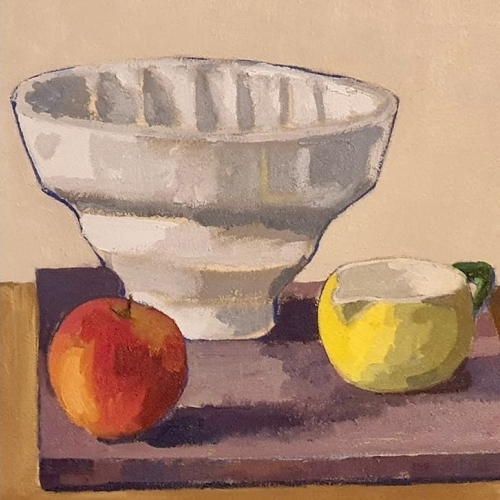
“Now here was a painter who’d been repeating the same subject, the same theme, over and over again for years. In his studio he had a collection of bottles and jars and he painted them continuously … a kind of still life.” These words were written by Robert Irwin about the early 20th century painter Giorgio Morandi, but they could equally apply to the work of Matthew Clarke.
Sadly for all of us, Clarke’s artistic journey was cut short when he passed away last year at the age of 56. Shortly before his death he wrote to a dear friend, “I feel like I will die soon … I am worried that people, friends, family don’t know who I am, why I did the things I did. I want them to know that I cared about beauty … it’s everything really, the truth of things. Beauty is often a surprise, not searched for.” He told another close friend that his work was a search for the truth of things, “The Sublime Truth”.
Clarke’s musings about his intentions are fairly limited due to an innate reticence and perhaps best explained by this, again remembered by a confidant: “I feel privileged to be an artist because it means there is always a mystery ahead of me. I cannot explain in words what I am unearthing while I work … if it could be explained that way I would not be required to explain it any further. So perhaps it’s true that when we name things, we put them into the realm of the known where they lose their threat, but also their mystery.”
Exhibition curator, Jane Grover, says, “I know that Giorgio Morandi was a big influence for Clarke as well as Cezanne’s still lifes. There are even echoes of the mood of works by the Surrealist painter Giorgio de Chirico.” Of the Cezanne influence, Clarke said to Jane “Yes I’ve been looking at Cezanne, always have done. In the way a physicist might study the work of Einstein to further their own work.”
He also plays with the picture plane in the manner pioneered by Cezanne saying, “The picture plane is my oyster”, and he often flattened out objects in the manner of Matisse, creating a tension between the 3D quality of say the lemon jug while boldly contouring the jelly mould rendering it 2D in Still Life with Lemon Jug.
The painting of still lifes is obviously not new in the history of art. Prosaic objects became the focal point of paintings as early as 1600, but that Morandi’s appeal and influence endures to the present day as much as the wild abstract expressionism of his contemporaries shows that this “quiet” art form still holds great appeal. As with Morandi, we see the same objects or “characters” as they seem to become: a vintage jelly mould, a pottery ewer, a water pump, an oil can, bits of discarded painted wood and so on, huddled together with slight variations, like a family posing for pictures. They are objects acquired not for their symbolism or function, but for their “objecthood” or personality when juxtaposed with each other. No one object shouts out its identity; it is more a tantalising shape and colour interacting with and defining the spaces and shapes around it.
Lawrence Weschler wrote, “Seeing is forgetting the name of the thing one sees”. In a way this kind of exploration is aiming to go back to the visual experience of a pre-verbal child, before labels are applied to shapes and colours defined by light.
The works as a whole exude a hypnotic mood and stillness which was possibly how the artist felt as he was experiencing and recording the images in front of him. Clarke's work was an evolving experiment: “I certainly feel that I am heading somewhere, don’t know where but that’s the good bit.”
As with all artists who die young, we are bereft and left wondering where he would have gone with his process given another decade or two.